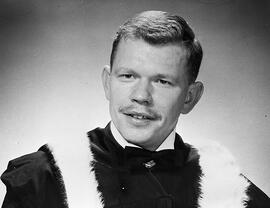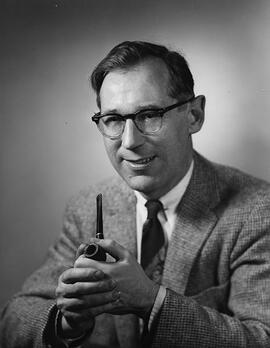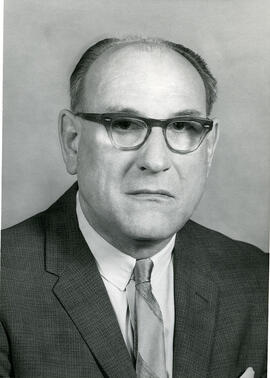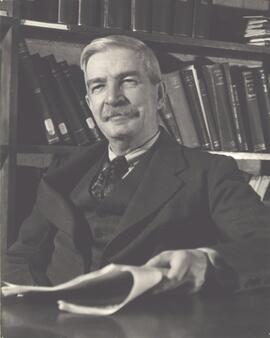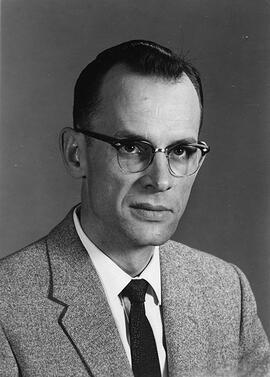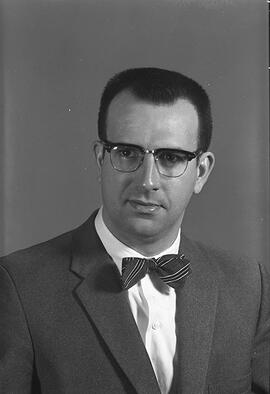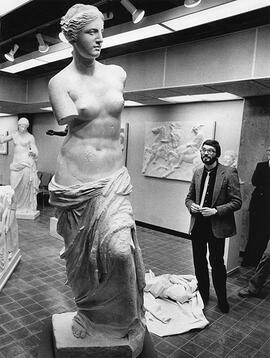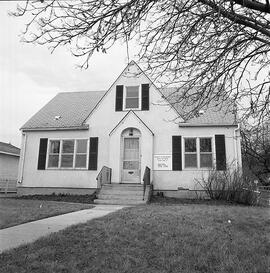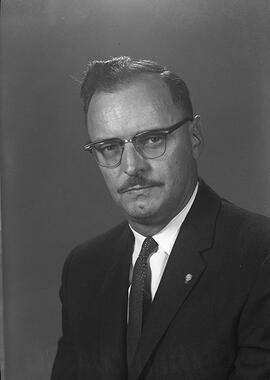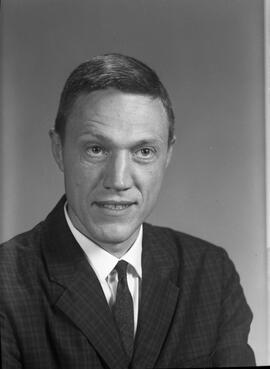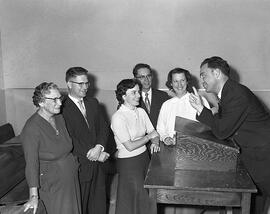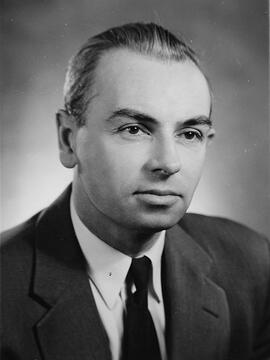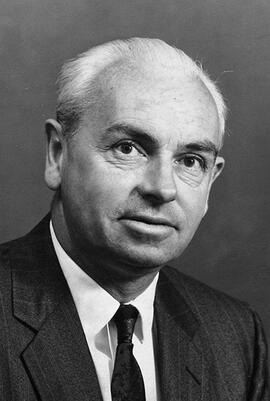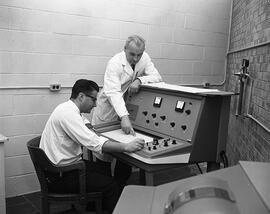- A-10606
- Item
- [1967?]
Head and shoulders image of Ken Mitchell, graduate, University of Regina Campus.
Bio/Historical Note: Kenneth Ronald Mitchell (b. 1940), playwright, novelist, short story writer, poet, actor, teacher and scriptwriter, grew up on a farm near Moose Jaw, and attended the University of Saskatchewan, Regina. While in university, he wrote stories and radio plays for the CBC. After graduating in 1967, Mitchell joined the University of Saskatchewan's Regina faculty, where he began teaching in the English department, specializing in Canadian Literature. He has also travelled to China, the Philippines, Korea, Mexico, and Scotland for various colloquia and teaching stints, and has instructed at the University of Victoria (1975-1976), the Banff School of Fine Arts (1977,1978,1980), and the Saskatchewan Summer School of the Arts (1970-1975). As a writer, whose work deals chiefly with prairie themes, Mitchell has tackled many genres (novels, poetry, drama, short stories, film scripts, and criticism), and he has also worked as an editor and actor. He is the author of several published works including, "Wandering Rafferty" (1972), "Sinclair Ross: a Reader's Guide" (1981), "Cruel Tears: a Country Opera" (1976), "The Shipbuilder" (1990), and "Stories for the Dalai Lama" (1993). His poems, interviews, stories and plays have been published in over 45 anthologies and collections, and in numerous journals. He has written more than 20 plays, which have been produced in Canada, the United States, England, Germany, New Zealand, China, and Ireland, and his work has been adapted for radio, television, and film. His play "Gone the Burning Sun" won the 1985 Canadian Authors Association Award for Drama, and was nominated for a Governor General's Award. Besides giving literary readings and creative writing workshops internationally, Ken Mitchell has participated in a number of professional activities, most notably as a founding member and frequent executive officer of the Saskatchewan Writers Guild, founding editor of the literary journal "Grain", and a founding member of the Saskatchewan Writers' Colony. Mitchell was given the University of Regina Alumni Award For Excellence in Research in 1996. Along with the recognition the award brings, it was accompanied by a $2,000 a year contribution for up to five years to the university professional expense account. Mitchell was also the recipient of the first University of Regina Distinguished University Professor Award. The newly-initiated award recognized the "most exceptional members" of the U of R "who have distinguished themselves in research, teaching and scholarly activity" to the benefit of their discipline and to the university.

